Your Easy Guide on How to Grow Pot at Home Safely
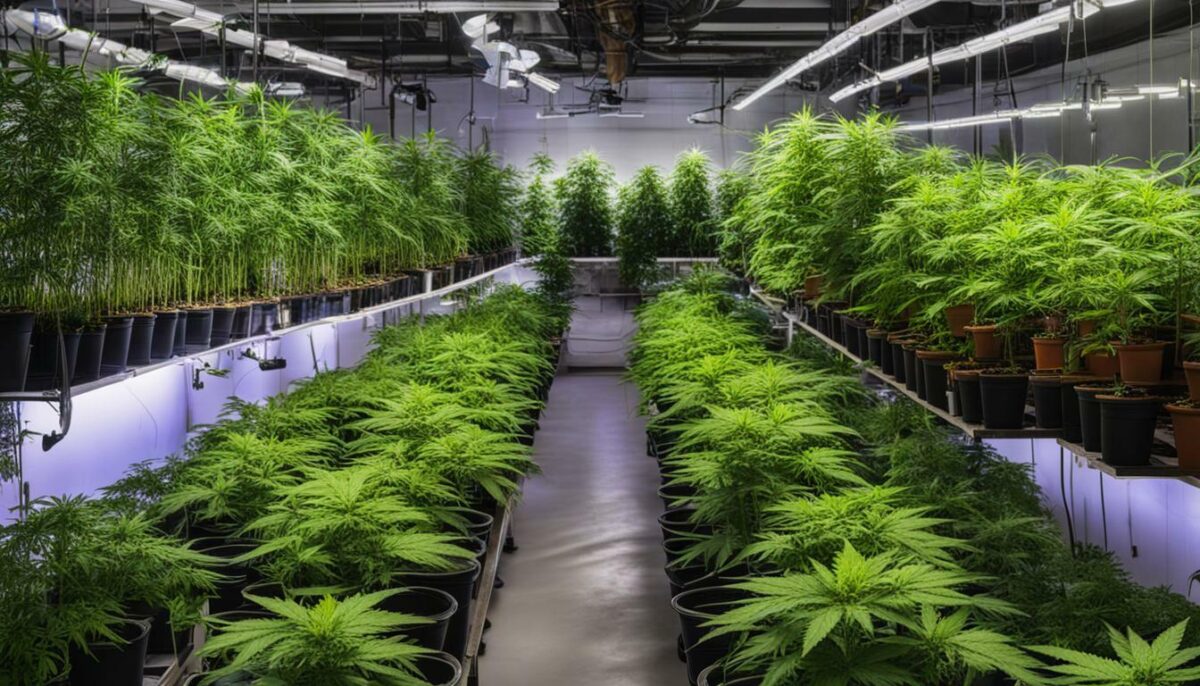
Welcome to my comprehensive guide on how to grow pot at home safely. I’m excited to share my personal journey and provide you with easy-to-follow steps to successfully cultivate your own cannabis plants. Whether you’re a beginner or an experienced grower, this guide will equip you with the knowledge and tips you need to get started on your pot growing journey.
Growing pot at home can be a fun and rewarding experience, but it’s essential to do it safely and responsibly. In this guide, we’ll cover everything from finding the right strain for your grow to harvesting and drying your buds. We’ll also discuss the legal considerations surrounding growing pot at home and responsible growing practices to keep in mind.
Key Takeaways:
- Learn how to grow pot at home safely with this comprehensive guide
- Choose the right strain for your grow by exploring different cannabis strains
- Create the ideal grow space by considering lighting, ventilation, temperature, and humidity
- Provide proper care and attention to your pot plants by providing the right nutrients, watering techniques, and maintaining optimal soil conditions
- Maximize your yields and enhance the quality of your buds with expert tips and tricks
- Stay aware of the legal considerations surrounding growing pot at home and practice responsible growing practices
Finding the Right Strain for Your Grow
Choosing the right strain for your pot grow is crucial to ensure a successful harvest. With so many cannabis strains available, it can be overwhelming at first, but with a little research, you can find a strain that suits your needs and preferences.
When selecting a cannabis strain, consider the following factors:
- Indica, Sativa, or Hybrid: Indica strains provide a relaxing body high, Sativa strains offer an uplifting cerebral high, and hybrids offer a combination of both.
- Growth Characteristics: Some strains are easier to grow than others and require less maintenance.
- Flavors and Aromas: Different strains have unique flavors and aromas.
- THC and CBD Content: The levels of THC and CBD vary between strains and can affect the potency and effects of the plant.
Some popular strains for pot growing include Northern Lights, Blue Dream, and Sour Diesel. Consulting with an experienced grower or visiting a dispensary can also provide valuable insights into selecting the right strain for your grow.
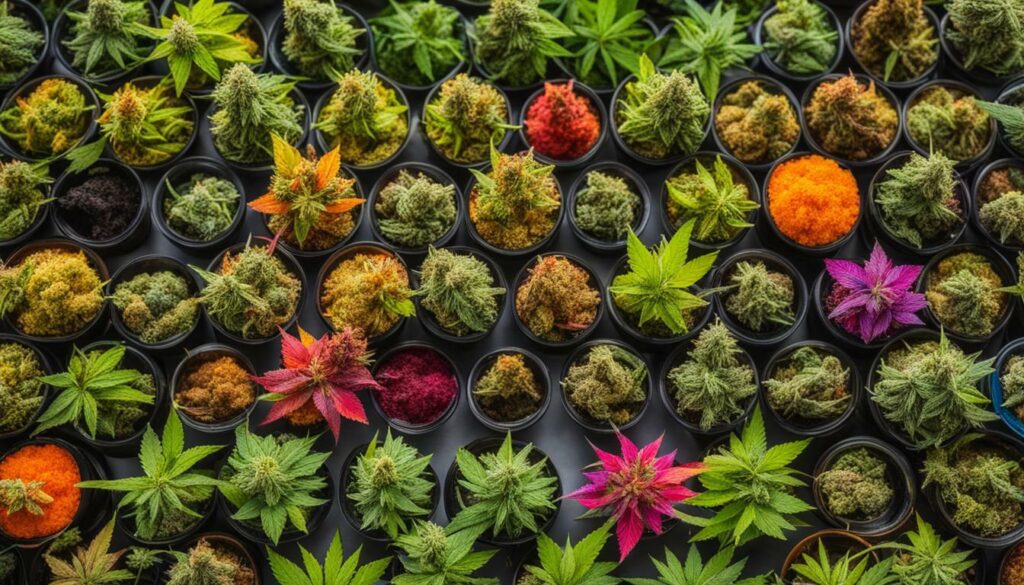
“Different strains have unique characteristics that make them ideal for specific growing environments and desired effects. Take your time exploring and experimenting to find the right strain for your personal pot growing journey.”
Setting Up Your Grow Space
Creating a suitable grow space is crucial for the success of your pot plants. Whether you’re working with a small corner of a room or a dedicated grow tent, it’s important to ensure that your plants have the ideal environment they need to thrive and produce high-quality buds.
The first consideration when setting up your grow space is lighting. Pot plants require a specific amount and type of light to grow, and investing in a quality grow light is essential. Look for high-quality LED lights or HID lamps that emit the right spectrum of light for your plants. Make sure your lights are positioned at the correct height above your plants and set up a timer to ensure they receive the right amount of light and dark hours during each growth stage.
Another important factor to consider when setting up your grow space is ventilation. Proper air circulation helps prevent the growth of mold and mildew and ensures that your plants receive enough fresh air. Install an exhaust fan to circulate air in and out of your grow space and add a carbon filter to remove any odors. Additionally, investing in a fan or two will help ensure that your plants receive a steady breeze, which promotes healthy growth and prevents pest infestations.
Temperature and humidity are other crucial factors when creating your grow space. Pot plants thrive in a specific temperature range, usually between 65-80°F, and require a humidity level of around 50-60% during the vegetative stage, and around 40-50% during the flowering stage. Invest in a thermometer and hygrometer to monitor these levels and adjust your space accordingly.
Finally, when deciding on the location of your grow space, make sure to choose an area that is easily accessible and away from any potential hazards or disturbances. Consider factors such as privacy, noise, and accessibility to water and electricity. Avoid placing your grow space in areas with extreme temperatures or light fluctuations.

Tip: Keep in mind that your grow space should be scalable. You may want to start small with just a few plants, but as you gain experience, you may want to expand your grow space to accommodate more plants. Plan ahead and choose a space that can grow with you as you become a more experienced grower.
Germinating and Propagating Seeds
Now that you have your grow space set up, it’s time to germinate and propagate your pot seeds. This is a crucial step in starting your grow, as it will determine the success of your plants in the early stages of growth.
One of the easiest and most common ways to germinate pot seeds is using the paper towel method. Firstly, take a few sheets of paper towel and wet them thoroughly. Place the seeds spaced out on one of the sheets and cover them with another. Put the sheets in a dark and warm place, such as a cabinet, and check them every 12 hours to ensure they remain moist. Within a few days, you should see sprouts starting to emerge from the seeds.
Another popular way to germinate pot seeds is to use seedling plugs, also known as rockwool cubes. These are small cubes of inert growing medium that can be easily transplanted into soil or hydroponic systems once the seedlings have emerged. Similar to the paper towel method, you’ll want to keep the plugs moist and in a warm, dark place until you see sprouts emerging from the seeds.
Once your seeds have germinated, it’s time to start propagating them. This involves transferring the sprouted seeds to a growing medium, such as soil or hydroponics, and allowing them to develop into seedlings. It’s important to provide the right conditions for seedlings to thrive, including proper lighting, humidity, and watering.
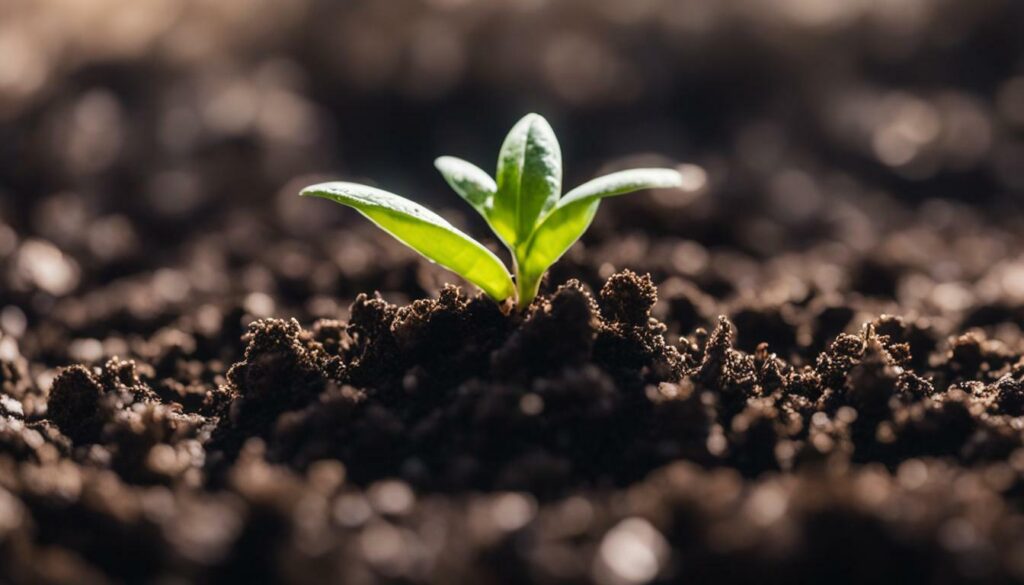
During this stage, it’s also crucial to be gentle with your seedlings to avoid damaging their delicate roots. When transplanting them to a larger container, make sure to handle them carefully and avoid disturbing their root systems.
By following these simple steps for germinating and propagating your pot seeds, you’ll be well on your way to a successful and bountiful grow. Just remember to be patient and attentive to the needs of your plants, and they’ll reward you with a high-quality yield.
Nurturing Your Growing Plants
Proper care and attention are essential for the healthy growth of your pot plants. Here are some essential aspects of plant care:
Providing the Right Nutrients
Your pot plants require the right balance of nutrients to thrive. During the vegetative stage, your plants need more nitrogen, while in the flowering stage, they require more phosphorus and potassium. You can choose from organic or chemical fertilizers, depending on your preference.
| Vegetative Stage | Flowering Stage |
|---|---|
| Nitrogen-rich fertilizer | Phosphorus and potassium-rich fertilizer |
It’s important to follow the recommended feeding schedule for your chosen fertilizer to avoid overfeeding or underfeeding your plants.
Watering Techniques
Proper watering is crucial for the health of your pot plants. Overwatering can lead to root rot, while underwatering can cause nutrient deficiencies. To avoid these issues, you should water your plants when the top inch of soil is dry.
When watering, ensure that the water reaches all parts of the soil and drains out of the bottom of your container. Avoid overwatering and causing standing water in the drainage tray.
Maintaining Optimal Soil Conditions
The pH level of your soil can affect the uptake of nutrients by your pot plants. The ideal pH range for cannabis plants is between 6.0 and 7.0.
You can use a pH meter or pH test strips to monitor the pH of your soil. If the pH level is too high or low, you can adjust it using pH-adjusting products such as dolomite lime or sulfur.
You can also consider using soil amendments such as compost, perlite, or vermiculite to improve soil structure, aeration, and water retention.
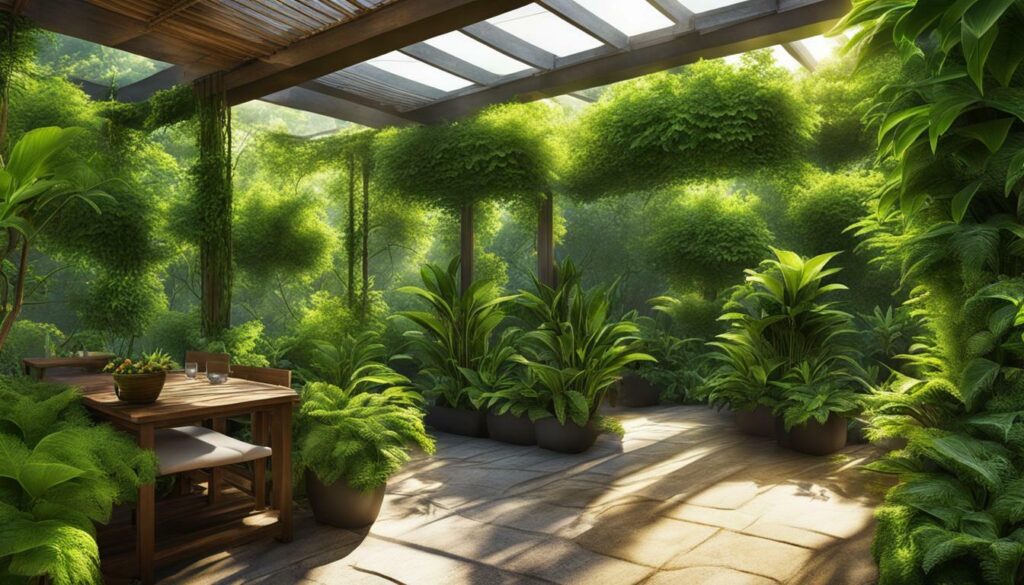
Tip: Be careful not to over-fertilize or over-water your plants, which can cause nutrient burn, root rot, or other issues that can negatively affect your pot plants’ growth and yield.
By providing your pot plants with the right nutrients, watering techniques, and maintaining optimal soil conditions, you can ensure they grow healthy and strong, resulting in a bountiful yield.
Managing Light and Photoperiod
Light is a crucial factor in the growth and development of pot plants. Understanding how to manage your light cycle is essential for a successful grow.
During the vegetative stage, pot plants require long periods of light to encourage healthy growth. Generally, growers aim for 18-24 hours of light per day during this stage.
As you transition to the flowering stage, it’s important to reduce the light cycle to encourage the development of buds. For most strains, a 12/12 light cycle (12 hours of light and 12 hours of darkness) is optimal to trigger flowering.
It’s important to maintain a consistent light cycle throughout the flowering stage. Any interruptions or changes to the light schedule can disrupt the flowering process and result in lower yields or inferior buds.
Consider investing in a timer to automate your light cycle and ensure your pot plants receive the necessary light and darkness hours.
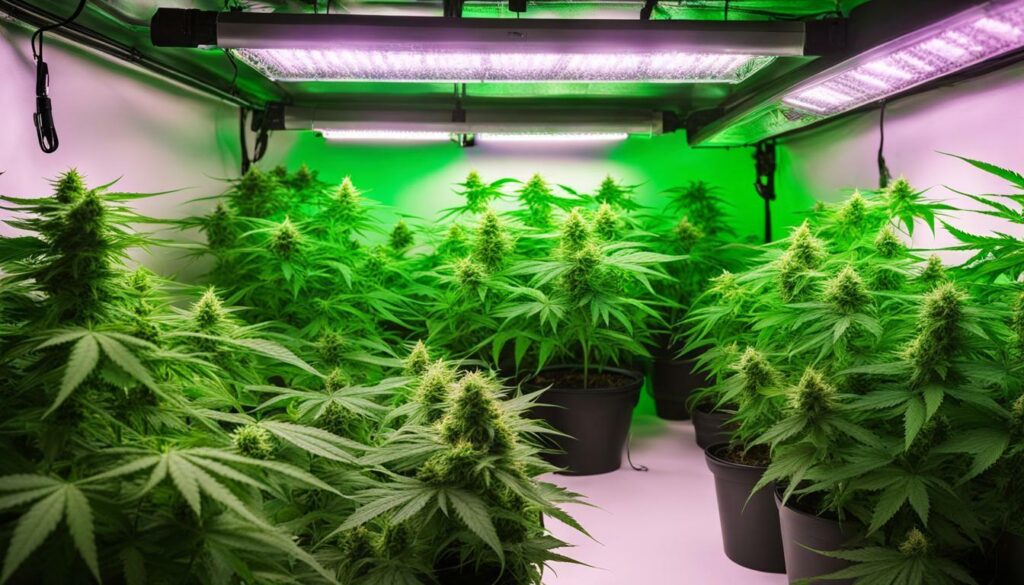
- Ensure your grow lights are the correct distance from your pot plants to avoid damage or light burn.
- Use reflectors or grow tents to maximize light penetration and distribution.
- Be mindful of your electricity usage and consider energy-efficient LED grow lights for long-term savings.
Harvesting and Drying Your Buds
Harvesting your pot plants is an exciting moment and the culmination of all your hard work. But before you begin, there are a few important things to consider. The first is determining the right time to harvest. You want to harvest when the trichomes, the tiny crystals on the buds, are mostly cloudy with a few amber ones. This is when the THC content is at its highest and the buds are at their peak potency.
Once you’ve determined the right time to harvest, it’s time to trim your buds. This involves removing the fan leaves and sugar leaves that don’t have any trichomes. You can use small scissors or a trimming machine to do this. It’s important to be gentle and careful during this process to avoid damaging the buds.
After trimming, it’s time to dry your buds. The drying process is crucial for achieving the best quality buds. Hang your buds upside down in a dry and dark place with good ventilation, such as a closet or a drying tent. The ideal temperature for drying is around 60-70°F with a humidity level of around 50%. This will allow your buds to dry slowly and evenly without drying out too quickly or becoming moldy.
After about five to seven days, your buds should be dry enough to move on to the curing process. This involves placing your buds in airtight glass jars, like mason jars, and opening the jars once a day to release any excess moisture. This process allows the buds to develop their flavor and aroma while also enhancing their potency. It’s important to store the jars in a cool, dark place away from direct sunlight.
The curing process can take anywhere from two weeks to several months, depending on your preferences. You can test the buds’ readiness by gently squeezing them; if they feel slightly spongy, they’re ready to be enjoyed!
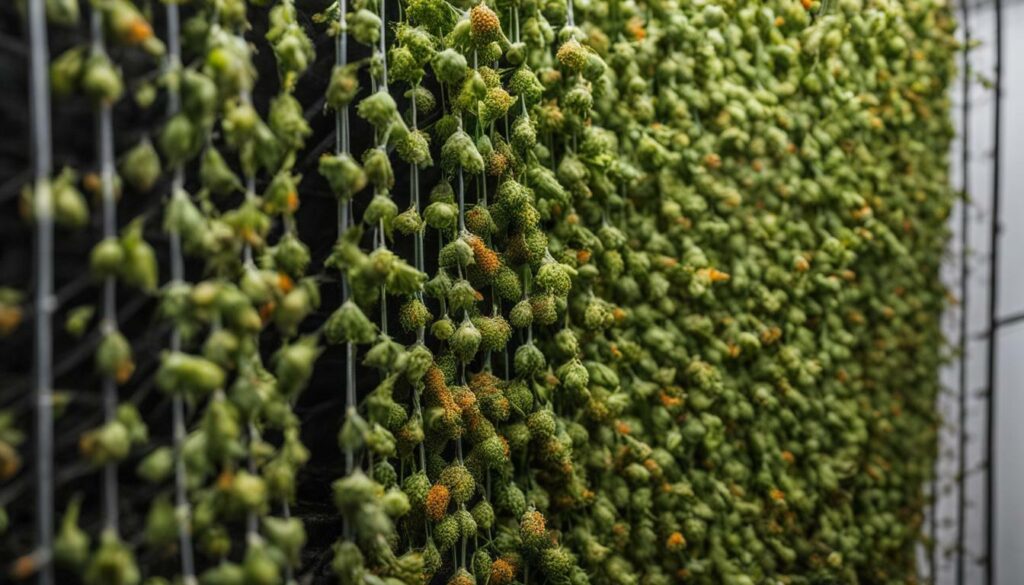
Remember, the drying and curing process is just as important as the growing process. Take your time and don’t rush it. Patience is key to achieving the best quality buds.
Pest and Disease Prevention
Keeping cannabis plants healthy and free of pests and diseases is crucial for a successful grow. Pests and diseases can stunt plant growth, reduce yields, and even kill plants if left untreated.
One common pest that can affect cannabis plants is spider mites. These tiny arachnids can multiply quickly and cause damage to the leaves and buds. To prevent spider mites, maintain a clean and controlled environment, and inspect plants regularly. If you do notice spider mites, try using organic solutions such as neem oil or insecticidal soap.
Another pest to watch out for is the fungus gnat, which can cause damage to the roots and soil. To prevent fungus gnats, maintain proper drainage and watering techniques, and avoid overwatering. Mosquito bits or nematodes can also be effective solutions for fungus gnats.
Various diseases can also affect cannabis plants, such as powdery mildew and bud rot. These diseases can spread quickly, so it’s important to catch them early and take action. To prevent diseases, maintain proper ventilation and humidity levels and avoid overcrowding plants. If you do notice signs of disease, remove infected plants and dispose of them properly.
Overall, prevention is key when it comes to pests and diseases. By maintaining a clean and controlled environment, inspecting plants regularly, and using organic solutions, you can keep your cannabis plants healthy and thriving.
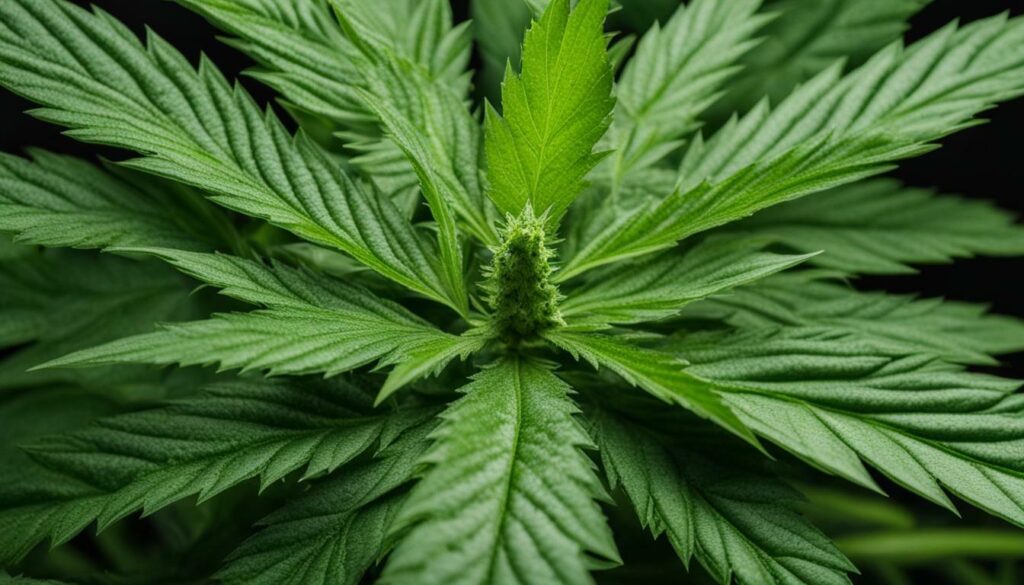
As a cannabis grower, it’s essential to aim for the highest yields possible. Here are some tips and tricks that I have learned over the years that can help you achieve bigger yields and better quality buds.
Training Techniques
Training your plants can help increase yields by exposing more buds to light and air, creating a more even canopy and maximizing the use of space. Some popular training techniques include:
- Low-Stress Training (LST): bending the main stem and securing it in place to expose more buds to light.
- Screen of Green (SCROG): using a screen to control the height and shape of the plants and create an even canopy.
- High-Stress Training (HST): more aggressive techniques such as topping, fimming, and super cropping to create more colas and increase yield.
Experiment with different training techniques to find the method that works best for you and your plants.
Nutrient Management
Providing your plants with the right nutrients at the right time is crucial for maximizing yields. Use a high-quality nutrient solution and follow the manufacturer’s instructions carefully. It’s essential to avoid nutrient burn or deficiency, as this can have a negative impact on your plants’ health and yield.
Additionally, it’s essential to flush your plants with water about a week before harvest to remove any excess nutrients from the soil, resulting in a smoother and more flavorful smoke.
Proper Lighting
Lighting is one of the most crucial factors in maximizing yields. Use a high-quality grow light that provides sufficient light intensity and coverage for your plants. Ensure that your plants receive between 18 and 24 hours of light per day during the vegetative stage and 12 hours of light and 12 hours of darkness during the flowering stage.
It’s also essential to monitor the distance between your plants and the light source, as well as the temperature of your grow space, to avoid heat stress or light burn.
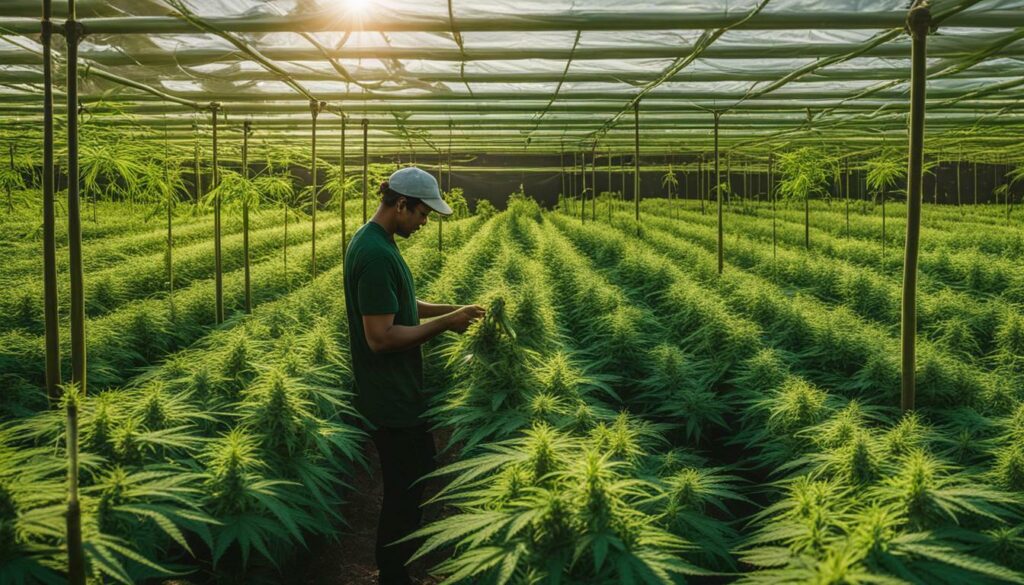
Proper airflow and humidity are crucial for healthy plant growth and maximizing yields. Ensure that your grow space has good ventilation and air circulation to prevent the development of mold and mildew. Use fans and air filters as needed to maintain optimal airflow.
Additionally, it’s essential to monitor and adjust humidity levels, with aim to keep it between 40-60% during vegetative stage, and 30-40% during flowering stage. High humidity can promote mold growth while low humidity can lead to stress, thus potentially reducing yields.
By implementing these tips and tricks, you can maximize your yields and achieve high-quality, potent buds that you can be proud of. Happy growing!
Legal Considerations and Responsible Growing
While growing pot at home can be a rewarding and enjoyable experience, it’s important to be aware of the legal considerations and regulations surrounding personal cannabis cultivation. As a responsible grower, it’s essential to follow the laws of your state and ensure that you’re not breaking any rules or risking any legal consequences.
Before starting your grow, research the laws and regulations in your state regarding personal cannabis cultivation. In some states, it may be legal to grow a certain number of plants for personal use, while in others, it may be strictly prohibited. Make sure you familiarize yourself with these laws and adhere to them to avoid any legal issues.
Additionally, it’s important to be a responsible grower by implementing safe and sustainable growing practices. This includes making sure your grow space is secure and not visible to the public, properly disposing of waste, and avoiding any activities that could potentially harm others or the environment.
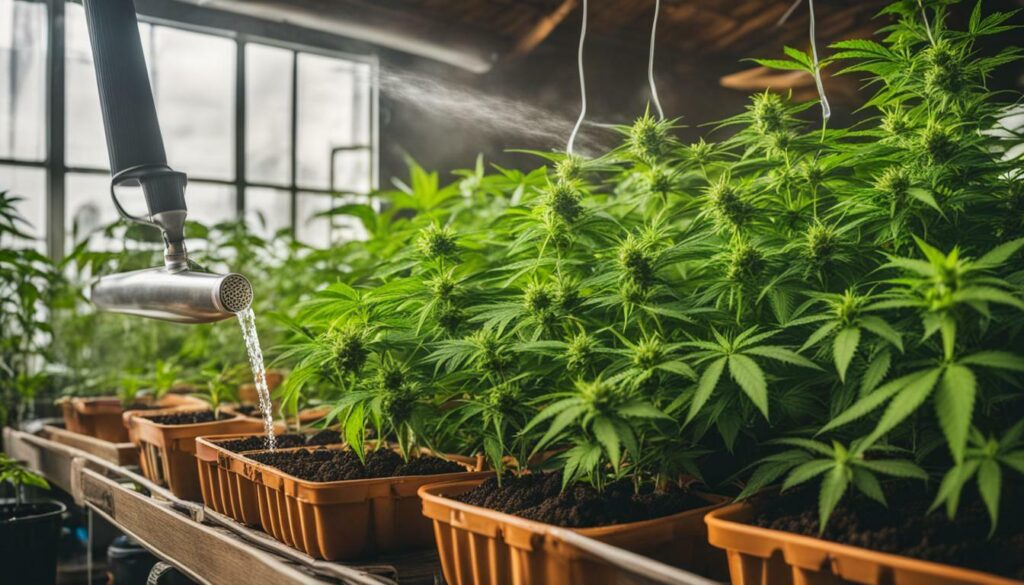
By following these legal and responsible growing practices, you can not only ensure a successful and enjoyable grow but also contribute to the overall positive image of the cannabis community. Remember, as a grower, you have a responsibility to yourself, your community, and the environment to grow pot in a responsible and mindful manner.
Wrapping Up Your Pot Growing Journey
I hope this guide has provided you with the necessary knowledge and tips on how to grow pot at home safely. Growing pot is a rewarding and fulfilling experience that allows you to have complete control over the quality and potency of your cannabis flowers.
Remember, each grow is a unique learning experience, and with time and practice, you’ll become a master grower. Don’t hesitate to experiment with different strains, techniques, and grow spaces to find what works best for you.
In conclusion, growing pot at home is not only fun and fulfilling but also has many benefits. It’s a cost-effective way to obtain high-quality cannabis, and you’ll have the satisfaction of knowing exactly how your flowers were grown and processed.
I encourage you to continue learning and exploring the world of pot growing. And always remember to grow responsibly and be mindful of the legal considerations surrounding personal cultivation.
Thank you for joining me on this pot growing journey, and happy growing!
FAQ
Q: How to grow pot at home safely?
A: Growing pot at home can be done safely by following proper cultivation practices. This includes setting up a clean and controlled grow space, using high-quality seeds or clones, providing the right nutrition and watering, and monitoring for pests and diseases. Additionally, it’s important to comply with local laws and regulations regarding personal cannabis cultivation.
Q: How do I choose the right strain for my grow?
A: Choosing the right strain for your grow depends on your preferences and goals. Consider factors such as the desired effects (e.g., relaxation, creativity), growth characteristics (e.g., height, flowering time), and the available space and resources in your grow setup. Researching different strains, including sativas, indicas, and hybrids, can help you find the perfect strain for your needs.
Q: How do I set up a grow space for pot plants?
A: To set up a successful grow space for pot plants, you’ll need to consider factors such as lighting, ventilation, temperature, and humidity. Options range from using grow tents to dedicated grow rooms, depending on the size and scale of your operation. Properly setting up these elements will create an optimal environment for your plants to thrive.
Q: How do I germinate and propagate pot seeds?
A: Germinating pot seeds can be done using methods such as the paper towel method or using seedling plugs. Both methods require providing the right conditions, including moisture and warmth, for the seeds to sprout. Once germinated, you can propagate the seedlings by transplanting them into a suitable growing medium, such as soil or hydroponics.
Q: How do I care for growing pot plants?
A: Caring for growing pot plants includes providing the right nutrients, watering techniques, and maintaining optimal soil conditions. This involves understanding the nutritional needs of your plants at different stages of growth, monitoring soil moisture levels, and adjusting watering accordingly. It’s also important to be aware of potential issues such as nutrient deficiencies, pests, and diseases, and take appropriate measures to address them.
Q: How does light and photoperiod affect pot plants?
A: Light is a crucial factor in the growth and development of pot plants. Different stages of the light cycle, including the vegetative stage and the flowering stage, have specific requirements for light and darkness hours. Properly managing the light and photoperiod during these stages is essential for successful growth, bud development, and maximizing yields.
Q: How do I harvest and dry my pot buds?
A: The optimal time to harvest pot buds is when the trichomes are fully developed and milky white in color. Once harvested, it’s important to properly trim the buds and then dry them in a controlled environment with good airflow. This allows the buds to dry slowly and evenly, preserving their flavor and potency. Properly dried buds can then be cured in glass jars for further enhancement.
Q: How do I prevent pests and diseases in my pot plants?
A: Preventing pests and diseases in pot plants involves maintaining a clean and controlled growing environment. Regularly inspecting your plants for signs of pests or diseases, practicing good hygiene, and implementing preventive measures can go a long way in keeping your plants healthy. Organic solutions, such as neem oil or beneficial insects, can also be used to control pests without resorting to harmful chemicals.
Q: What are some tips for maximizing yields in pot growing?
A: Maximizing yields in pot growing requires attention to various factors. These include managing airflow and humidity, implementing training techniques such as topping or LST (low-stress training), providing the right nutrients and supplements, and maintaining optimal growing conditions. Additionally, staying informed about the latest research and techniques can help you continually improve your cultivation practices.
Q: What legal considerations should I be aware of when growing pot at home?
A: The laws and regulations surrounding personal cannabis cultivation vary by jurisdiction. It’s important to familiarize yourself with the specific laws in your area to ensure compliance. This may include restrictions on the number of plants you can grow, the possession limits, or the need for licenses or permits. Being a responsible grower means staying informed and abiding by the legal requirements.
Q: What should I keep in mind as I conclude my pot growing journey?
A: As you conclude your pot growing journey, take the time to reflect on the knowledge and experience gained. Growing pot is a continuous learning process, and each harvest provides an opportunity to refine your skills. Remember to dispose of waste properly, be considerate of your neighbors, and embrace the benefits of cultivating your own pot, such as the satisfaction of self-sufficiency and the potential for high-quality buds.